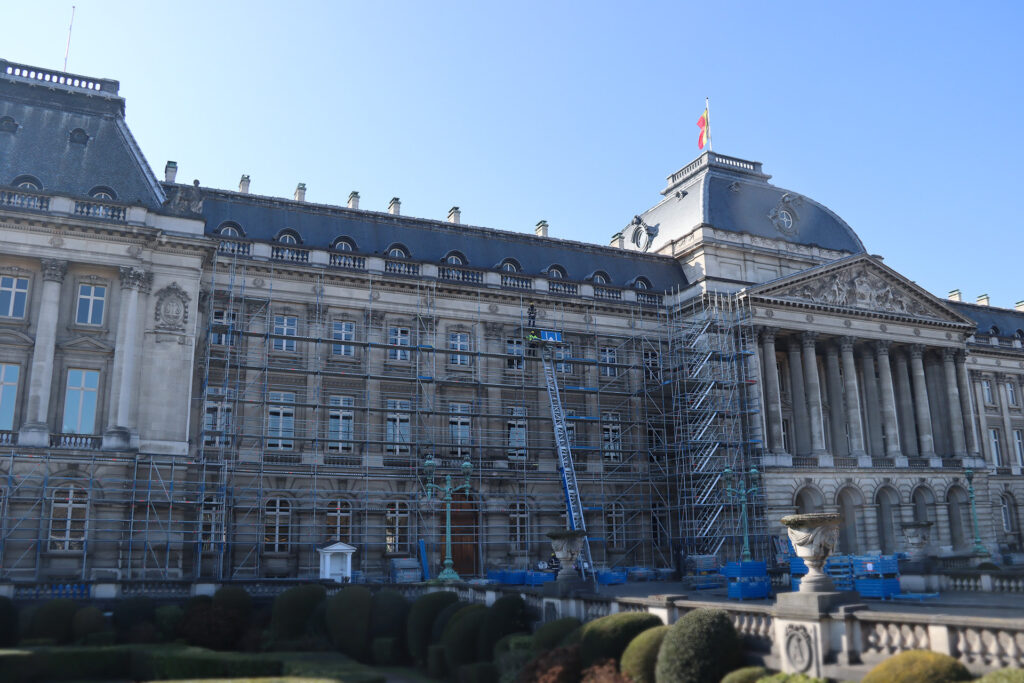The Belgian Buildings Agency officially started the renovation of the facades of the Royal Palace in Brussels on Monday 6 March, which is part of the planned work to reduce the building's energy footprint.
The renovations consist of the cleaning and restoration of the facade, the stone balustrades and stairs, but also of the garden walls, fences and gates. There will also be a restoration and replacement of the exterior joinery and fitting it with thermally insulating glazing for better insulation.
"We should be proud of our heritage. The Royal Palace, like the Brussels Justice Palace, is a symbol of our country. The restoration of the facades is essential to restore its splendour," said Secretary of State in charge of the Buildings Agency, Mathieu Michel. "At the same time, we are restoring 700 windows to reduce our consumption by 20%. So it is both an energy project and an aesthetic project."
In total, this operation involves more than 700 windows and 2,800 m² of joinery. The works would take about a year and a half and cost around €6 million.
Here comes the scaffolding...
To ensure the palace remains easily accessible, the works will take place in two phases: first the facades on the left side of the palace (when facing it) and of the main building, and later those on the right side of the facade.
Since Monday 27 February, scaffolding is being put in place and will take two to three weeks to cover the entire facade. Subsequently, a cloth will be attached to the scaffolding to shield the building during the works.
The Buildings Agency is also working on a more efficient heating system for the Royal Palace in Brussels. The aim of the project is to reduce the CO2 emissions and the energy consumption of the Royal Palace by 20%.
Related News
Here, too, the works are being carried out in phases over several years to guarantee heat production during the heating season. In 2019-2020, the Belgian Buildings Agency first carried out various studies to determine the most suitable measures.
During the 2020-2021 heating season, the Agency analysed the energy readings in order to obtain accurate consumption data and determine the capacity of the future boiler room, and in 2022, the heating pipes in the trenches between the boiler room and the main building of the palace will be replaced.
This year (2023), the Buildings Agency wants to start removing asbestos from the cellars and furnishing the gas cabin, and in the summer of 2024 and 2025, it will replace the main heating circuits. Finally, in 2025, it is planned to renew the boiler room and the various substations.

